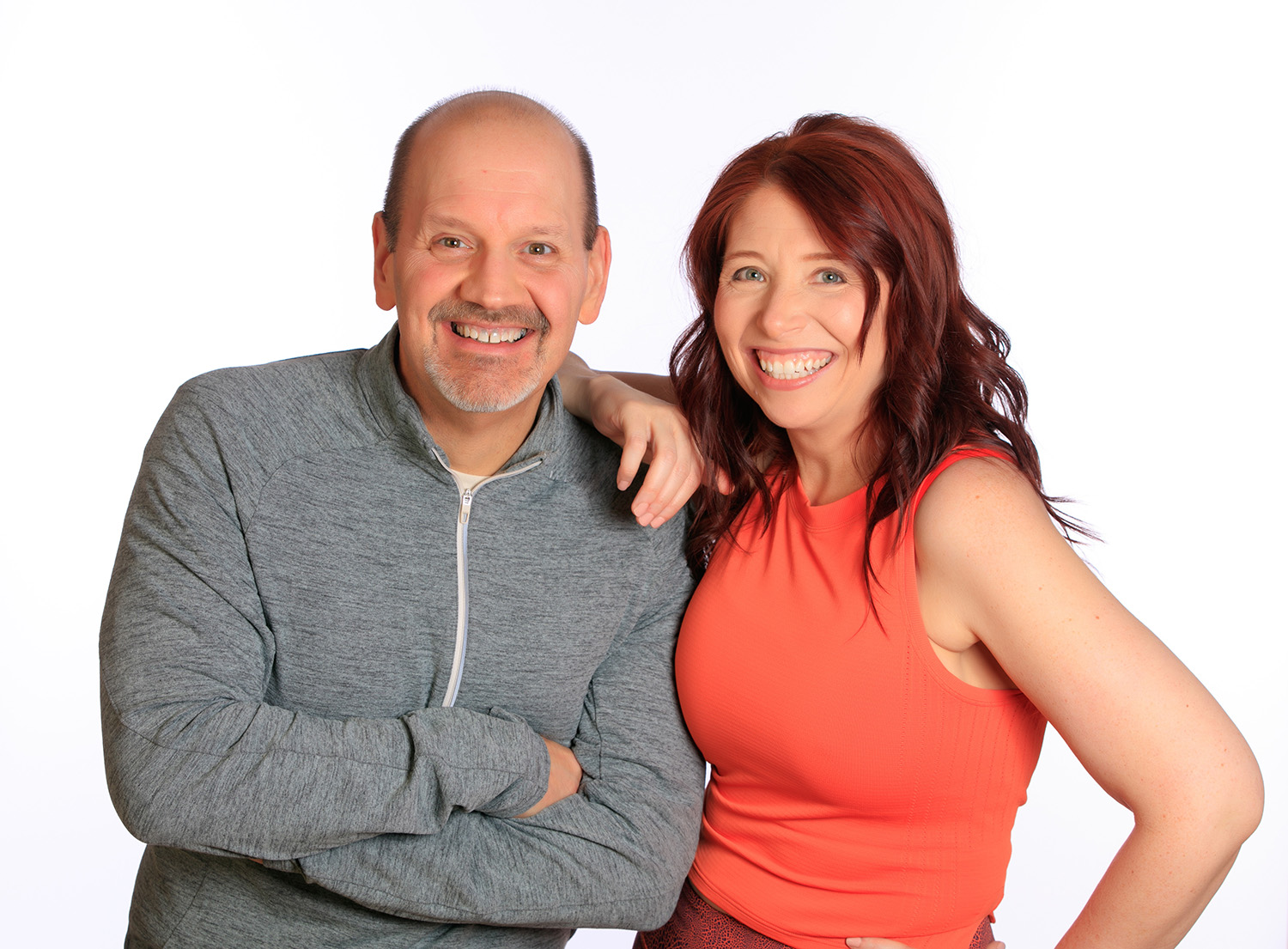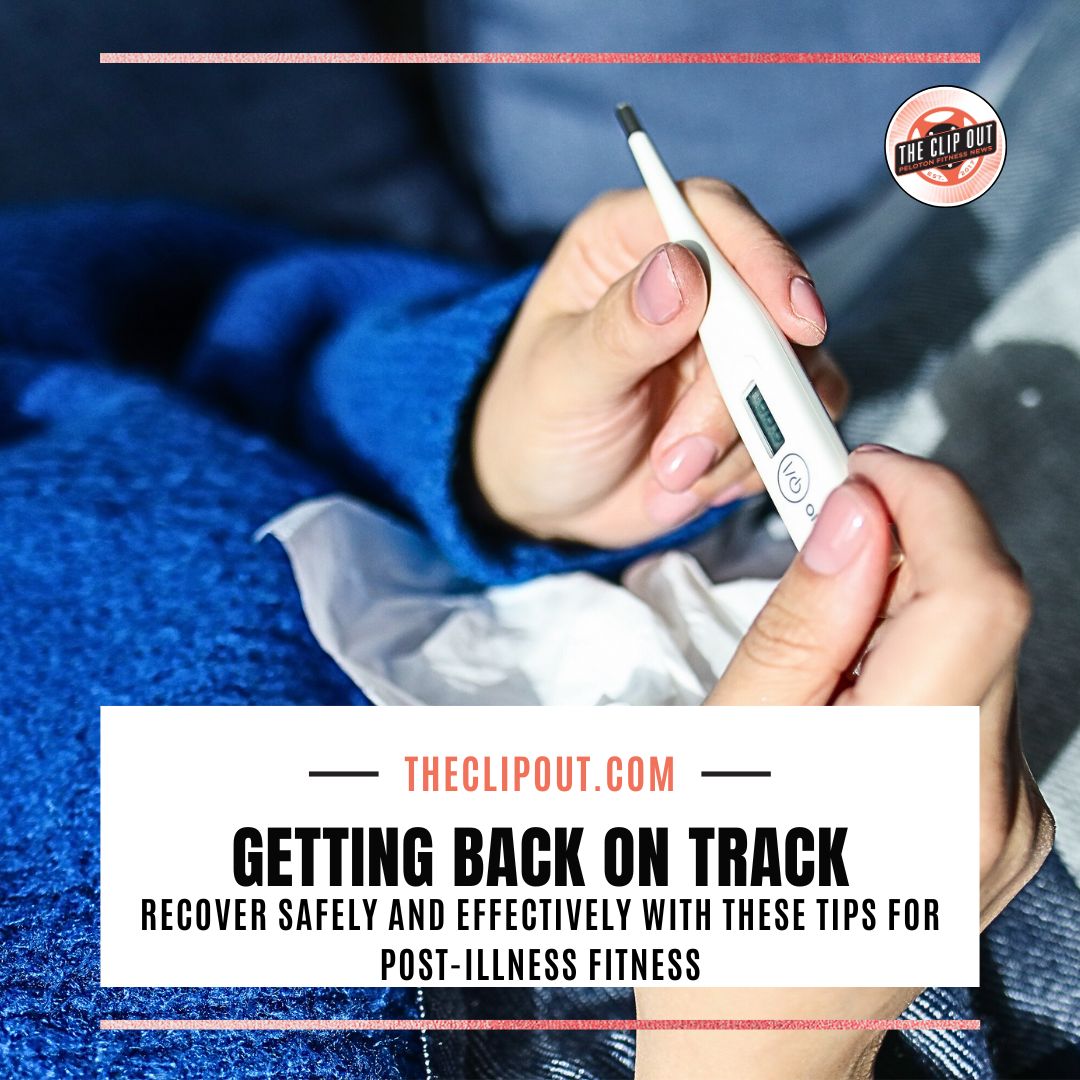How to Return to Exercise After Illness
It’s Virus Season and, if you’re super-human and never get sick, this article isn’t for you. But, if you’re regular-human, the chances of picking something up while out shopping or sitting next to a sick co-worker, or your kid bringing home an art project and the plague from school are high this time of year. Honestly, it’s a germ gauntlet out there and recovering from severe viruses like the flu, RSV, COVID-19, or Norovirus can leave your body feeling depleted and really knock you off of your game–especially your fitness game. But, when you’re used to working out on a regular basis, the desire to return to your fitness routine is usually pretty strong, which may lead to some Nyquil-fueled “how to return to exercise after illness” Googling. Because, even though you may not feel like working out yet, you know you’re going to want to eventually.
Despite a desire to just get back to normal, jumping back into a workout routine too quickly can actually backfire and cause a setback in recovery or an injury because your body wasn’t ready. So, what do you do in that in between–when you want to ease your way back into working out but also can’t operate at full strength? The honest answer is that a gradual and thoughtful approach during this time will help you rebuild strength and energy safely. Here’s how to do exactly that while supporting your recovery and not overloading your system.
Patience is Key
No, it’s not the sexiest bit of advice, but it is the most prudent. When you’re thinking about how to exercise after an illness, patience really is your greatest ally. Your body has already endured stress while fighting off sickness, so overloading it too soon can hinder your recovery, no matter how much you want to get back to your routine. Instead of jumping back in right where you left off before you got sick, start small, focusing on shorter, less intense workouts, and gradually increase intensity as your strength returns. Think of your return to fitness as a “deload week” where you reduce effort and volume.
Treat It Like a Deload Week
When you’re thinking about how to return to exercise after illness, approach your return to fitness as if you’re transitioning into a deload week from a weeks-long training program. Scale back on intensity, reduce workout volume, and prioritize rest days between sessions. A good rule of thumb is to cut your usual effort in half—whether that means halving the distance, speed, or weight—and gradually build back to your pre-illness levels. This measured approach gives your body time to adapt, reduces the risk of overtraining, and helps prevent setbacks.
Focus on Gentle Workouts
When restarting your fitness routine, opt for low-impact activities that are easier on your body. Consider:
- Walking: A light walk is perfect for rebuilding endurance without overexertion.
- Yoga or Stretching: Gentle flows and stretches can help improve flexibility and circulation.
- Bodyweight Exercises: Simple movements like squats or modified push-ups can help reintroduce strength training.
Avoid high-intensity or heavy lifting workouts until you feel fully recovered.
You can also find a practical deload blueprint in this article reviewing Rebecca Kennedy’s 5 Day Split.
Listen to Your Body
Listening to your body is always important, but especially so when you’re jumping back into a fitness routine post-illness. Pay close attention to how you feel before, during, and after workouts. Fatigue, dizziness, or an elevated heart rate are signs to slow down or rest. It’s normal to feel less energetic than usual, so don’t push yourself to hit pre-illness performance levels immediately. If your symptoms return or worsen, take a step back and prioritize rest.
Nutrition Matters
Despite the old (and incorrect!) saying “starve a fever, feed a cold,” nutrition plays a crucial role in all aspects of healing but especially in post-illness recovery. And, if you were the unlucky recipient of a round of a gastrointestinal illness like Norovirus (like me–0 stars, do not recommend, btw), your digestive system will likely need time to heal and your stomach may not be onboard with jumping back into your normal diet. Instead, start with bland, easy-to-digest foods like rice, bananas, applesauce, and toast (the BRAT diet, aka the beige food diet). Gradually reintroduce more complex foods like lean proteins, vegetables, and healthy fats as your tolerance improves. You might also consider adding a probiotic into your daily supplement routine to help heal your gut microbiome. And remember, be patient. Reintroducing food after a GI illness is not a linear path and it’s not uncommon for it to take several days, if not weeks, before your stomach is ready to make friends with food again.
If your workout routine includes strength training, reintroducing protein is essential for recovery and rebuilding muscle. After a GI illness, however, adding protein back into your diet can be challenging. Frankly, your stomach just might not be in the mood to tolerate it. So, start with easily digestible options like whisking egg whites into oatmeal—don’t worry, you won’t taste the eggs!—or sipping on bone broth, which provides about 9 grams of protein per serving. Looking for gentle, protein-packed options can help you fuel your recovery and feed your muscles without overwhelming your digestive system.
Rehydration is just as important as reintroducing food, especially after an illness that causes dehydration. Focus on sipping water, herbal teas, or electrolyte drinks to restore lost fluids, and avoid sugary beverages like sodas, which can disrupt hydration and cause stomach upset.
Once your appetite fully returns, focus on nutrient-dense meals that will continue to support your energy and recovery.
Set Realistic Expectations
Let’s face it: recovering from RSV, the flu, COVID-19, or Norovirus can leave you feeling drained even after the worst of the symptoms have passed and you’re no longer contagious. Your energy and endurance levels may be significantly lower, and it’s important to acknowledge that your fitness might temporarily decline. Frankly, it is what it is, and instead of getting frustrated by lost progress, try to shift your thinking and view this as an opportunity to rebuild a solid foundation. Focus on small, consistent efforts, and you’ll gradually regain your strength and stamina over time. At the end of the day, patience and persistence really are key to a successful recovery. Treat this phase as a chance to ease back into fitness and set yourself up for long-term success. Remember: Progress not perfection because recovery, in all forms, is a journey.
Tune in to The Clip Out every Friday to hear Tom and Crystal’s take on this and other hot Pelotopics. We’re available on Apple Podcasts, Spotify, Google Podcasts, iHeart, TuneIn. Be sure and follow us so you never miss an episode. You can also find the show online on Facebook.com/TheClipOut. While you’re there, like the page and join the group. Lastly, find us on our YouTube channel, YouTube.com/TheClipOut, where you can watch all of our shows.
See something in the Peloton Universe that you think we should know? Visit theclipout.com and click on Submit a Tip!
Latest Podcast

Subscribe
Keep up with all the Peloton news!








